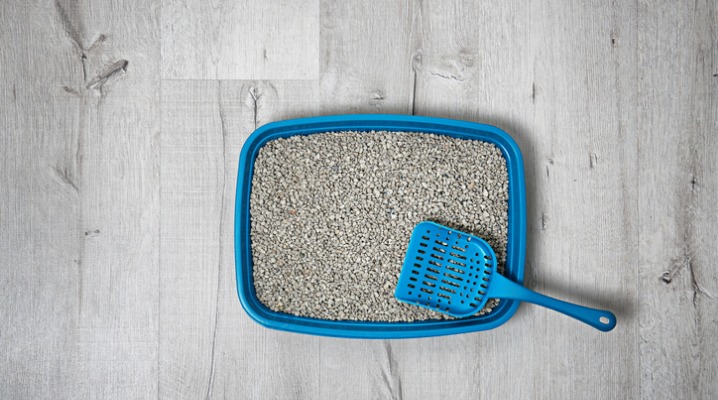
Get the Scoop: Does Litter Type Really Matter?
With so many brands and types available today, the options for kitty litter can seem overwhelming. Should you go for the cheapest option? What does the difference in particle size mean? What scents do cats like best? Your biggest question might be, “Does the type of litter I buy really matter?”
Whether you’re adopting a new cat or have owned one for years, you’ll need to stock up on a few specific cat-care items, namely kitty litter. If you’ve been puzzled over the best litter to buy, you’re not alone—it’s a very common consideration for pet owners.
Here’s the scoop on kitty litter and how to choose the best one for your cat.
Every cat—and owner—has their preference

The first thing to understand is that every cat, along with every owner, will have their own needs and preferences. A scented clumping litter might work best for your home, and your cat may be most comfortable in litter with very fine particles.
When you first get your cat, you may need to experiment with different litters to ensure your cat is comfortable using one. It’s very important to find a litter that your cat likes so it doesn’t have accidents around the home out of a refusal to use the litter box. Also important is finding a litter type that meets both your cat’s and your own needs.
In general, most cats prefer a few specific litter qualities. First, more cats are drawn to odor-free litters. Scented litters can be overwhelming to your cat’s nose and actually deter it from using the litter box.
Additionally, litters with small particles tend to be preferable. In the wild, cats historically urinated and defecated in sand, and fine-particle litter is the closest alternative to that. Larger pellets or crystal litters can be uncomfortable or even painful under your cat’s paws.
Common litter attributes

Beyond the average cat’s preferences, you’re bound to find a wide array of litter types out there. The sheer number of options can be overwhelming—especially if you’re not keen on spending money on a litter your cat ends up disliking!
Here’s some more info on some of the main types and features of litter.
- Particle size and texture: There are a lot of options when it comes to litter particle size and texture. Some litters are extremely fine and soft, almost like sand itself, while others have bigger particles or are even composed of large pellets.
- Formula choices: There are lots of different bases for cat litter. The most common and popular is clay, which is relatively inexpensive and comes in both clumping and non-clumping options. Other options include paper, silica gel, absorbent crystals and plant-based materials. Some of these options are more environmentally friendly or have greater ease of use, but they can be more expensive.
- Clumping: A lot of litters have clumping capability, meaning the particles absorb waste and clump together to form an easily removable chunk. Some people think clumping litter is wasteful, while others prefer it due to its ease to clean up. Non-clumping litter is often cheaper and better at absorbing the scent of urine; however, it can be much more time-intensive to clean up.
- Odor absorbency: Some litters include ingredients like baking soda or activated charcoal, which help to absorb the odors caused by your cat’s waste and mask them until you clean the litter box. This minimizes the smell that can permeate a room.
Special considerations for litter
Ultimately, the type of litter you pick doesn’t matter all that much as long as you and your cat likes it. When in doubt, opt for an unscented, finely textured litter and see how your cat interacts with it. If you’re having litter box troubles, you may want to try other types to find the right one.
However, if your cat has certain medical problems, you may need to be more selective about your litter choice.
Allergies
If you have a cat with allergies, you may need to find a litter that doesn’t include specific ingredients your cat is allergic to. Cats can develop allergies to a wide range of environmental allergens, including things like clay or scents that are in the litter. If your cat is starting to itch after using the litter box, you may need to switch litters.
Cuts, wounds, or tender pads
If your cat has a wound or recently had surgery on its paws, you’ll want to temporarily use a litter that is gentler on the feet, such as a paper-based formula. Finely textured litter could get into the wound and irritate your cat’s feet, potentially driving it to eliminate waste outside of the box.
Asthma
If your cat has asthma, you’ll want to find a low-dust litter that doesn’t put irritating dust into the air upon use. This dust can aggravate your cat’s lungs and trigger an asthma attack.
Finally, note that once your cat gets used to a particular type of litter, you should avoid changing the type of litter used unless absolutely necessary. Cats don’t take well to change in general, so switching to a totally new litter type could result in more accidents around the home.


